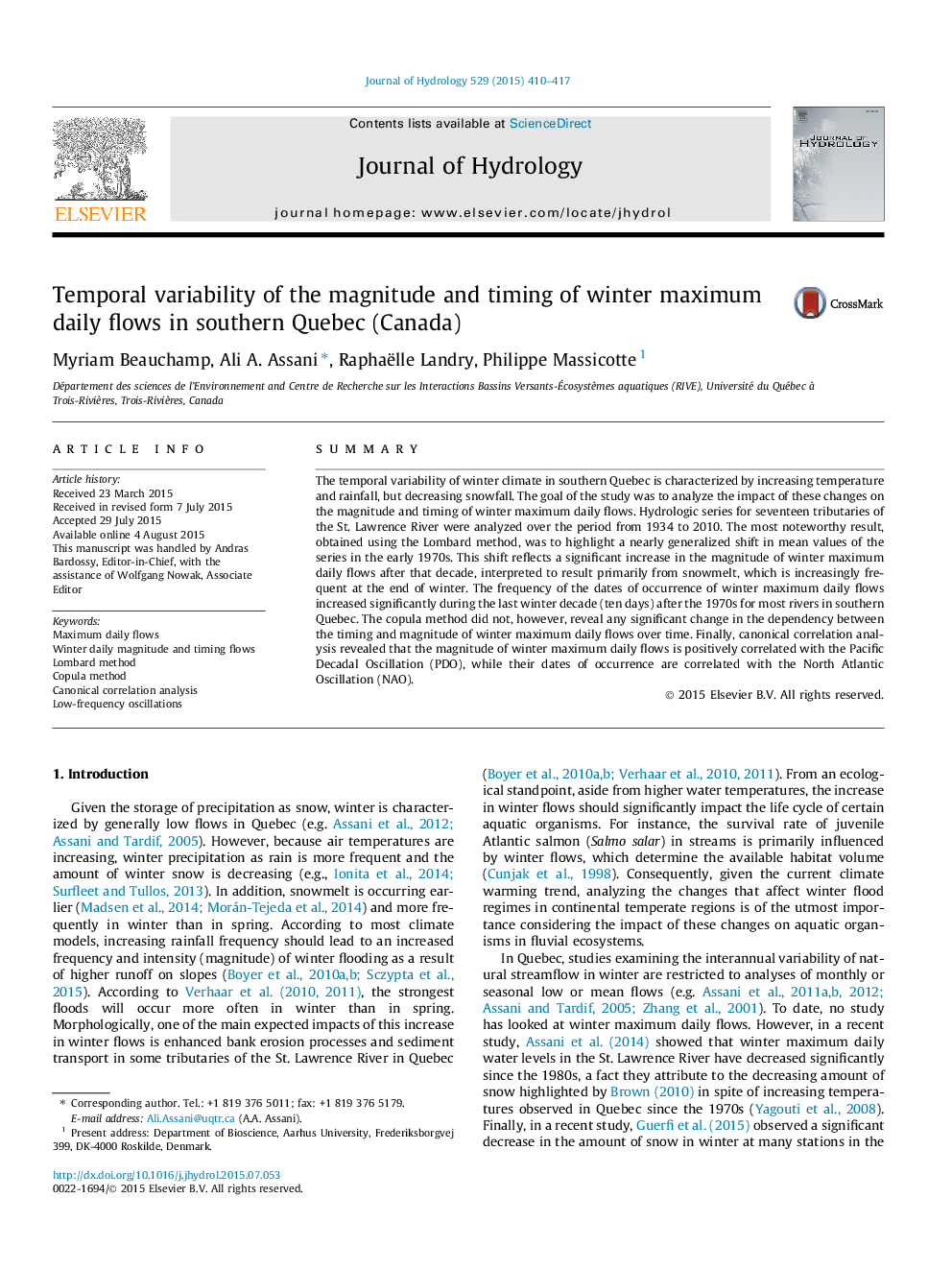| Article ID | Journal | Published Year | Pages | File Type |
|---|---|---|---|---|
| 6411025 | Journal of Hydrology | 2015 | 8 Pages |
â¢Nearly generalized increase in magnitude of winter maximum daily flows.â¢This increase took place after the 1970s.â¢The increase in flood magnitude is thought to result from early snowmelt.â¢This magnitude of winter floods is better correlated with PDO.â¢The timing of winter floods is better correlated with NAO.
SummaryThe temporal variability of winter climate in southern Quebec is characterized by increasing temperature and rainfall, but decreasing snowfall. The goal of the study was to analyze the impact of these changes on the magnitude and timing of winter maximum daily flows. Hydrologic series for seventeen tributaries of the St. Lawrence River were analyzed over the period from 1934 to 2010. The most noteworthy result, obtained using the Lombard method, was to highlight a nearly generalized shift in mean values of the series in the early 1970s. This shift reflects a significant increase in the magnitude of winter maximum daily flows after that decade, interpreted to result primarily from snowmelt, which is increasingly frequent at the end of winter. The frequency of the dates of occurrence of winter maximum daily flows increased significantly during the last winter decade (ten days) after the 1970s for most rivers in southern Quebec. The copula method did not, however, reveal any significant change in the dependency between the timing and magnitude of winter maximum daily flows over time. Finally, canonical correlation analysis revealed that the magnitude of winter maximum daily flows is positively correlated with the Pacific Decadal Oscillation (PDO), while their dates of occurrence are correlated with the North Atlantic Oscillation (NAO).
